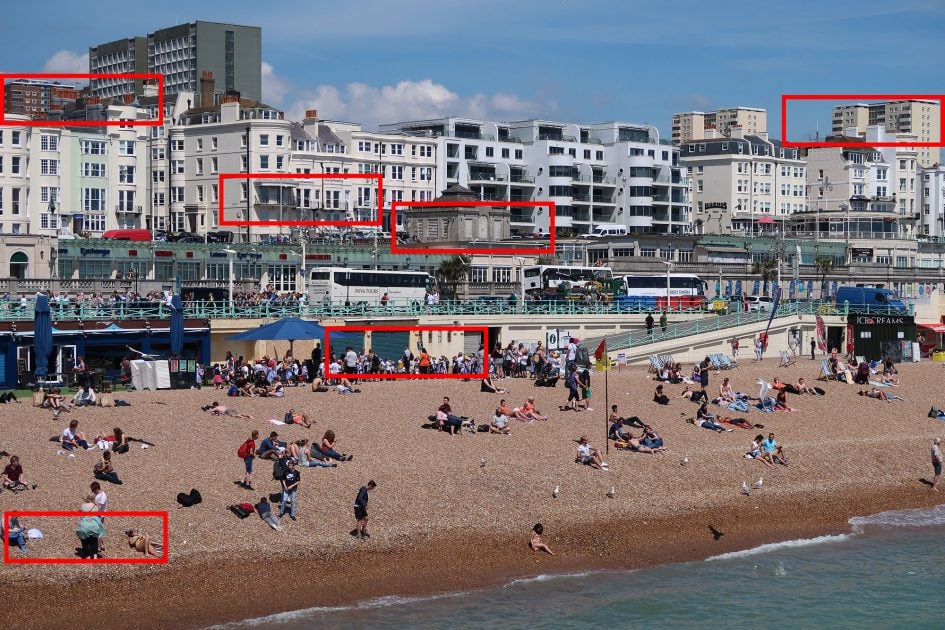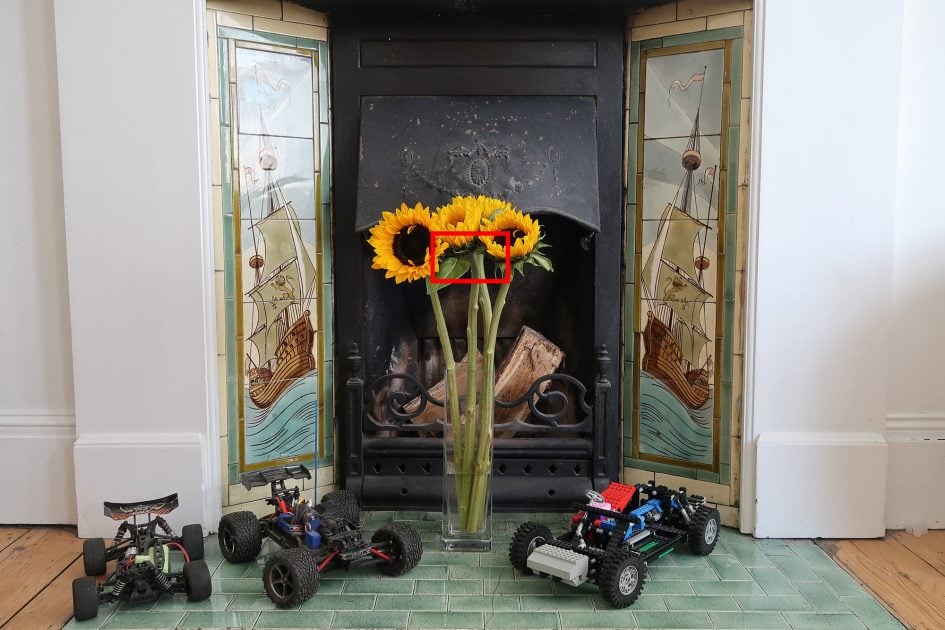Canon PowerShot G7X Mark II review
-
-
Written by Gordon Laing
Quality
To judge the real-life quality of the G7X Mark II under typical situations, I shot this scene of Brighton’s sea front at a variety of focal lengths and apertures. Throughout the range, the G7X II delivers good results with distant subjects across the frame with only mild softening in the corners when zoomed to its widest focal length. Zoom the lens-in only slightly longer and the quality improves with crisp results across the frame. The G7X II also benefits from closing the aperture slightly in terms of sharpness across the field. I’ve presented results from the image taken at an equivalent of 67mm f4 here where the optics are performing well. Below you can see the entire composition, followed by a table of 100% crops made from the areas marked by the red rectangles. This page examines JPEGs using the default settings. I have a RAW vs JPEG comparison on the next page.

Judging from the crops below it’s clear the G7X Mark II is capable of delivering crisp results across the frame with distant subjects at longer focal lengths. It comes as no surprise as the original G7X and G5X, which share the same optics, delivered much the same result. Like those models, the camera suffers from some softening in the corners at wide-angle, but improves quickly as you zoom-into longer lengths.
If you’re concerned about the corners at wide angle, I’d encourage you to download some of my sample images taken at this focal length as they’re really not bad at all – they just lack the crispness in the corners of the longer focal lengths. This softness is also accentuated at closer distances, especially for macro photography, but again few expect a flat field for macro shots at wide angle from a camera like this.
Where the G7X Mark II differs from the earlier PowerShot G models though is its use of the latest DIGIC 7 processor. Looking at the images from those models and this one, I reckon the G7X II is delivering slightly punchier output by default which on the surface looks very satisfying for general use. As you can see in the crops below though, there’s evidence of the sharpness and contrast being set arguably a little too high, but you can always reign it back or shoot in RAW and process later. I have a RAW vs JPEG comparison in my Canon G7X II noise results below, or you can skip to my Canon G7X II sample images or head back to my verdict.

Above: Canon G7X Mark II JPEG at f4 and 125 ISO. 100% crop.

Above: Canon G7X Mark II JPEG at f4 and 125 ISO. 100% crop.

Above: Canon G7X Mark II JPEG at f4 and 125 ISO. 100% crop.

Above: Canon G7X Mark II JPEG at f4 and 125 ISO. 100% crop.

Above: Canon G7X Mark II JPEG at f4 and 125 ISO. 100% crop.

Above: Canon G7X Mark II JPEG at f4 and 125 ISO. 100% crop.
Canon PowerShot G7X Mark II noise JPEG vs RAW
To compare the real-life noise of the Canon PowerShot G7X Mark II, I shot the following scene with it in its RAW+JPEG mode at each ISO and have presented crops below at 100% from the area marked by the red rectangle. In the left column you’ll see the JPEGs using the out-of-camera default settings and on the right the RAW version processed in Adobe Camera RAW using sharpening of 50 / 0.5 / 36 / 10 and with noise reduction set to zero. The high degree of sharpening coupled with zero noise reduction may be extreme, but reveals exactly what’s going on behind the scenes and how much real-life data you have to work with.

On the previous page I commented how the G7X II, like many Canon cameras, turns up the contrast and sharpening for its default JPEGs. They can look punchy as a result, but sometimes a little over-cooked. The difference is apparent in the table below where you can see JPEGs using the default settings in the left column and processed RAWs on the right; even with significant sharpening in Adobe Camera RAW, the crops in the right column look more natural.
Disabling noise reduction on the RAW conversions does however reveal artefacts sooner rather than later. By 400 ISO there’s already a very fine sprinkling in areas of flat colour, like the petals. This increases significantly at 800 and 1600 ISO and by 3200 ISO there’s visible loss of fine details, most notably the veins in the leafs.
But the quality, like all models with a 1in sensor, remains far superior to a typical point-and-shoot camera or smartphone – and don’t forget with a fairly bright lens, the G7X II will be able to maintain fairly low ISOs in general situations.

Above left: JPEG out-of-camera, above right: RAW conversion. Both 100% crops at 125 ISO

Above left: JPEG out-of-camera, above right: RAW conversion. Both 100% crops at 200 ISO

Above left: JPEG out-of-camera, above right: RAW conversion. Both 100% crops at 400 ISO

Above left: JPEG out-of-camera, above right: RAW conversion. Both 100% crops at 800 ISO

Above left: JPEG out-of-camera, above right: RAW conversion. Both 100% crops at 1600 ISO

Above left: JPEG out-of-camera, above right: RAW conversion. Both 100% crops at 3200 ISO

Above left: JPEG out-of-camera, above right: RAW conversion. Both 100% crops at 6400 ISO

Above left: JPEG out-of-camera, above right: RAW conversion. Both 100% crops at 12800 ISO
Next check out my Canon G7X Mark II sample images or tab to my verdict.




